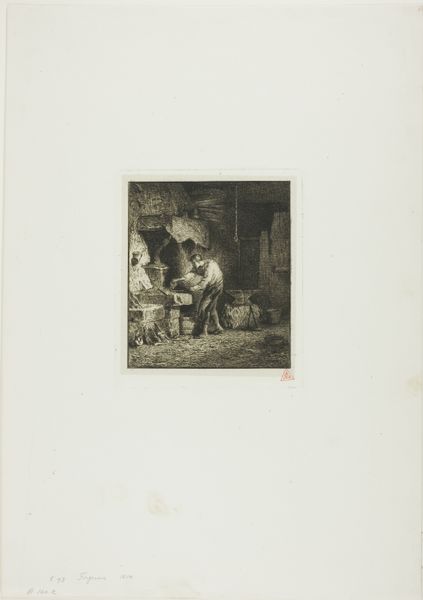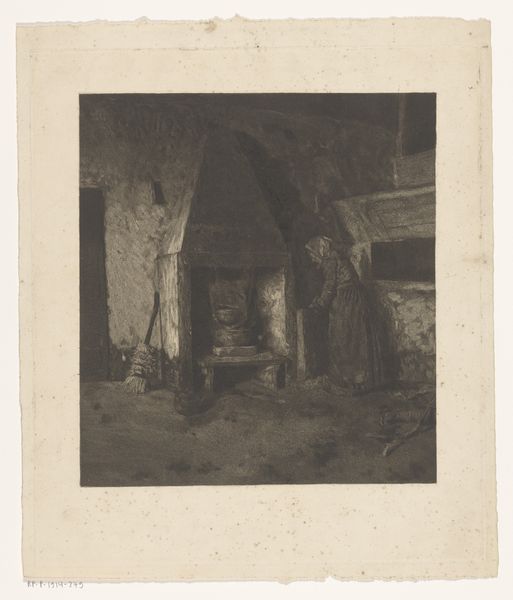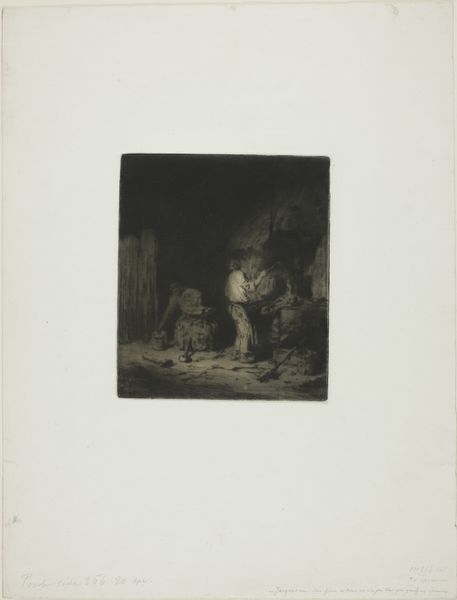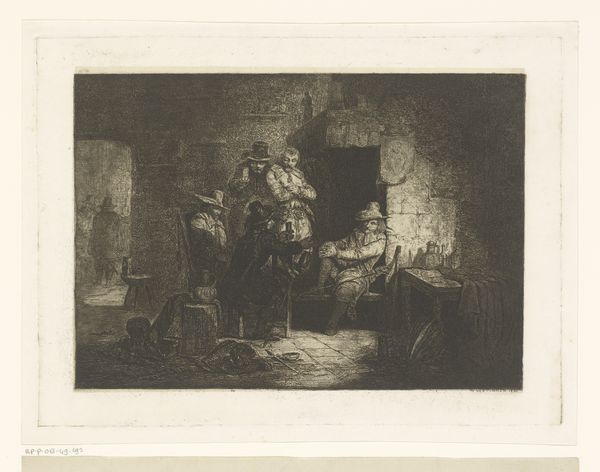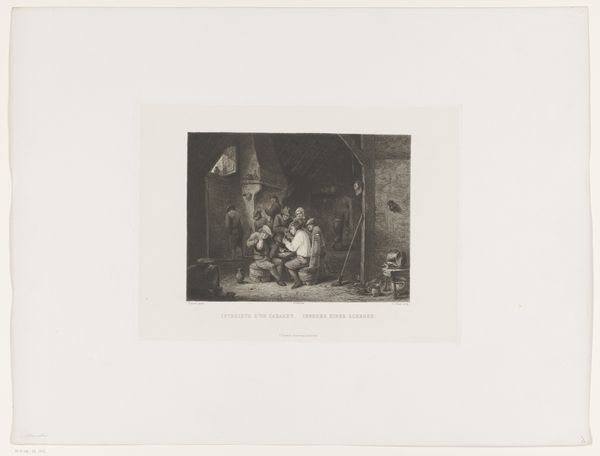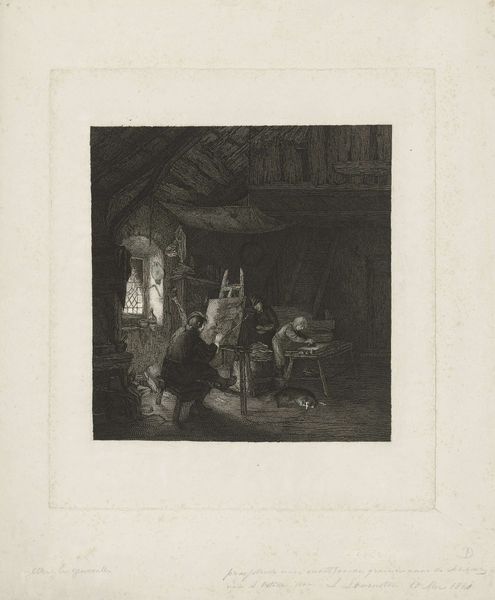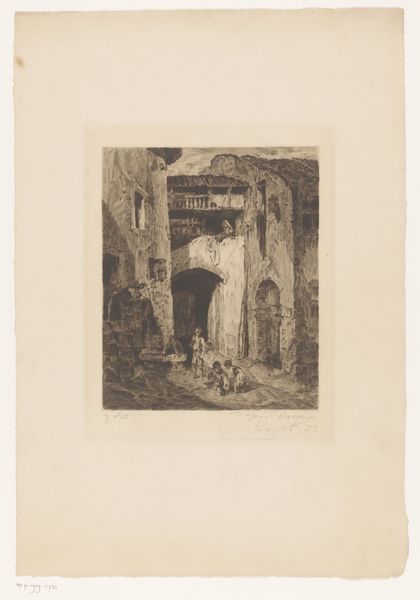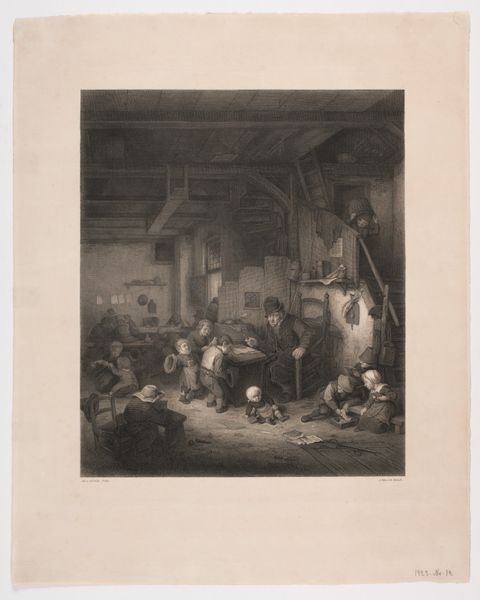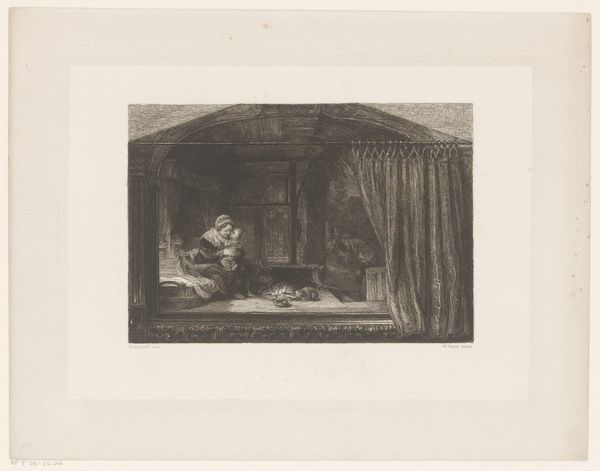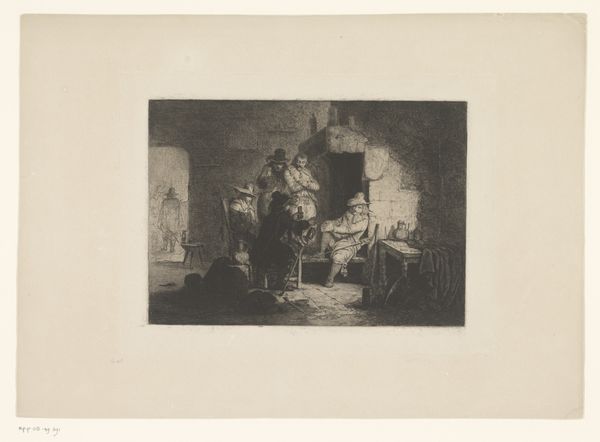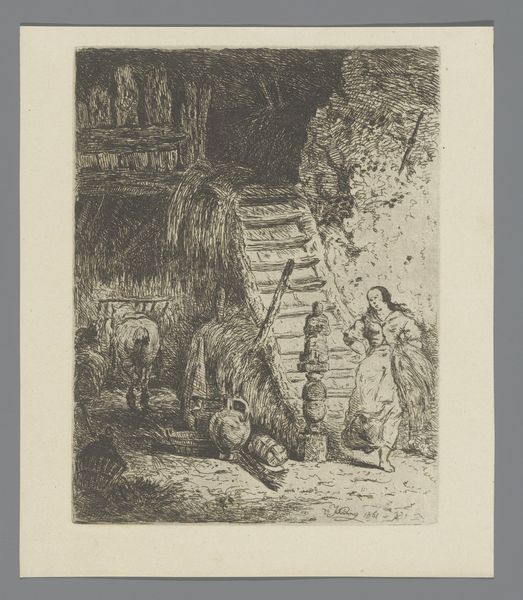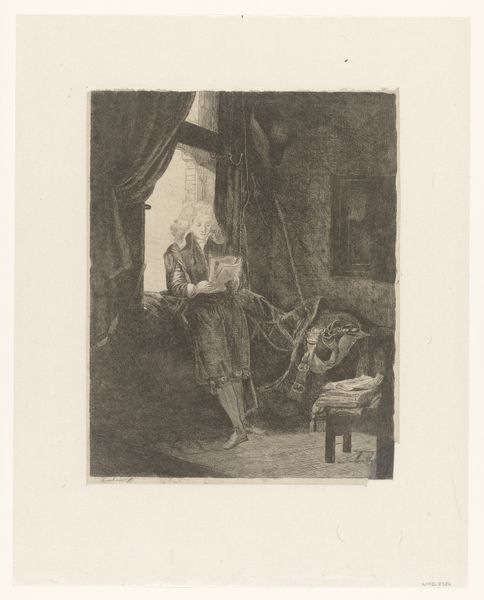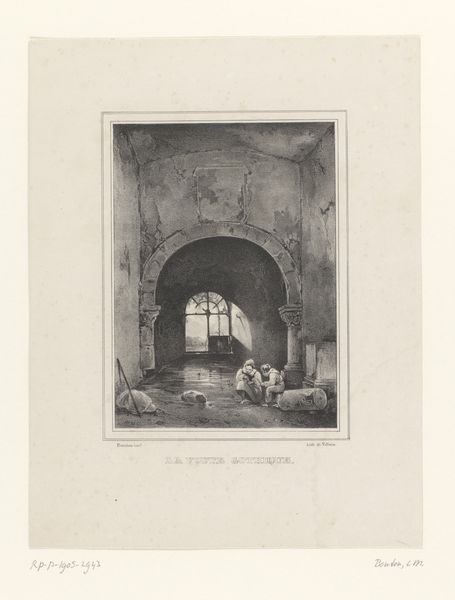
drawing, print, intaglio, engraving
#
drawing
#
ink paper printed
# print
#
intaglio
#
genre-painting
#
history-painting
#
engraving
#
realism
Dimensions: height 397 mm, width 322 mm
Copyright: Rijks Museum: Open Domain
Curator: This is "Heilige Familie in de timmermanswerkplaats," or "Holy Family in the Carpenter's Workshop," an 1856 intaglio print by Jules-Jacques Veyrassat. Editor: It's a somber scene, almost claustrophobic. The limited light draws you into the figures huddled together, but the deep shadows surrounding them create a feeling of… confinement? Curator: Precisely. Veyrassat was working in the Realist tradition, depicting the everyday life of ordinary people. Here, the Holy Family is presented not as divine figures in a glorious setting, but as working-class individuals within the confines of their workshop. Note how the materials and tools of Joseph’s trade dominate the foreground. This focus on labor is a hallmark of Realist art, elevating the working class and their activities. Editor: And consider where such imagery might circulate. As a print, this artwork would have had a relatively wide distribution. How does portraying a familiar, sacred subject through a distinctly working-class lens affect its reception? Was this a means of democratizing faith or did it risk unsettling established societal norms? Curator: That tension between devotion and depiction is quite powerful. The intaglio process, engraving into the metal plate, then inking it to transfer the image to the paper, becomes a metaphor for the inscription of labor, poverty and everyday faith onto a reproducible format. Think about the sheer physical labor that goes into creating an image meant to represent humble circumstances! Editor: Right, the printing process itself plays into the socio-political narrative of art's production and dissemination. By choosing such accessible imagery, Veyrassat brings the sacred into the homes of the people, but is that a reflection of his intent, or simply a convenient justification to sell affordable prints? Curator: Perhaps it's both. But look at how the light falls, emphasizing the weary faces. There’s beauty here, not in idealized forms but in the shared experience of daily toil, depicted via these painstaking marks upon metal. Editor: Considering its place in art history and its potential impact on religious visual culture, this work underscores the complex relationship between sacred narrative, everyday life and art's ability to both reinforce and subvert established perceptions. Curator: Exactly. It offers us a moment to contemplate the lives of those typically left out of the grand narratives of history painting. Editor: A perspective earned not only through historical analysis, but also by considering the artwork’s creation from a technical perspective.
Comments
No comments
Be the first to comment and join the conversation on the ultimate creative platform.
